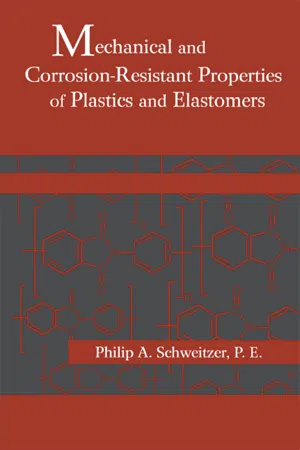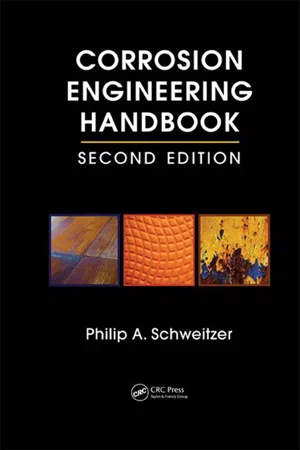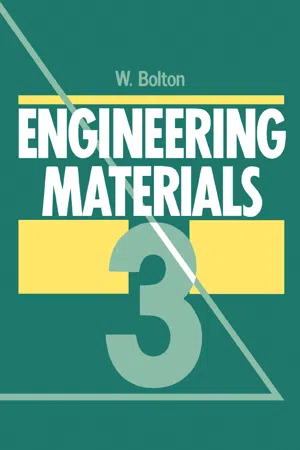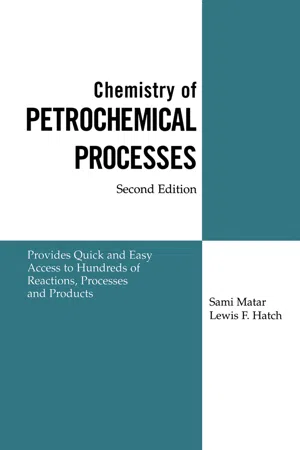Chemistry
Thermoplastic and Thermosetting
Thermoplastics are polymers that can be melted and reshaped multiple times without undergoing chemical change, while thermosetting plastics undergo a permanent chemical change when heated, making them non-meltable and non-resculptable. This distinction is important in the field of materials science and engineering, as it determines the potential applications and properties of these two types of plastics.
Written by Perlego with AI-assistance
Related key terms
1 of 5
11 Key excerpts on "Thermoplastic and Thermosetting"
- Philip A. Schweitzer(Author)
- 2000(Publication Date)
- CRC Press(Publisher)
2 Thermoplastic Polymers 2.1 INTRODUCTION TO THERMOPLASTIC POLYMERS As discussed previously, thermoplastic polymers can be repeatedly re-formed by the application of heat, similar to metallic materials. They are long-chain linear molecules that are easily formed by the application of heat and pressure at temperatures above a critical temperature referred to as the “glass temperature.” Because of this ability to be re-formed by heat, these materials can be recycled. However, thermal aging which results from repeated exposure to the high temperatures required for melting, causes eventual degradation of the polymer and limits the number of reheat cycles. Polymers are formed as the result of a polymerization reaction of a monomer which is a single molecule or substance consisting of single molecules. Copolymers are long-chain molecules formed by the addition reaction of two or more monomers. In essence, they are chains in which one mer has been substituted with another mer. When the chain of a polymer is made up of a single repeating section, it is referred to as a homopolymer in contrast to a copolymer. Thermoplastic polymers can be either homopolymers or copolymers. Alloy polymers are blends of different polymers. In general, thermoplastic materials tend to be tougher and less brittle than thermoset polymers so they can be used without the need for incorporating fillers. However, all thermoplasts do not fall into this category. Some tend to craze or crack easily, so each case must be considered on its individual merits. By virtue of their basic polymer structure, thermoplastics have been less dimensionally and thermally stable than thermosetting polymers. Therefore, thermosets have offered a performance advantage, although the lower processing costs for thermoplastics 29 30 Chapter 2 have given the latter a cost advantage. Because of three major developments, thermosets and thermoplastics are now considered on the basis of performance.- Philip A. Schweitzer, P.E., Philip A. Schweitzer P.E.(Authors)
- 2018(Publication Date)
- CRC Press(Publisher)
The term plastics was originally adopted to describe the early polymeric materials because they could be easily molded. Unfortunately, many current polymers are quite brittle, and once they are formed they cannot be molded. In view of this, the term polymer will be used throughout the book. There are three general categories of polymers: thermoplastic polymers called thermoplasts , thermosetting polymers called thermosets , and elastomers called rubbers . Thermoplasts are long-chain linear molecules that can be easily formed by heat and pressures at temperatures above a critical temperature referred to as the glass temperature . This term was originally applied to glass and was the temperature where glass became plastic and formed. The glass temperatures for many polymers are above room temperature; therefore, these polymers are brittle at room temperature. However, they can be reheated and reformed into new shapes and can be recycled. Thermosets are polymers that assume a permanent shape or set when heated; although, some will set at room temperature. The thermosets begin as liquids or powders that are reacted with a second material or that through catalyzed polymerization result in a new product whose properties differ from those of either starting material. Examples of a thermoset that will set at room temperatures are epoxies that result from combining an epoxy polymer with a curing agent or catalyst at room temperature. Rather than a long-chain molecule, thermosets consist of a three dimensional network of 1 2 Corrosion of Polymers and Elastomers atoms. Because they decompose on heating, they cannot be reformed or recycled. Thermosets are amorphous polymers. Elastomers are polymeric materials whose dimensions can be drastically changed by applying a relatively modest force, but they return to their original values when the force is released.- eBook - PDF
- J Maxwell(Author)
- 1994(Publication Date)
- Woodhead Publishing(Publisher)
The heating and freezing processes can be repeated many times without significant chemical change (although not without some deterioration, usually attributable to the breaking of molecular chains). 13 14 Plastics in the automotive industry Thermosetting materials, when heated above a critical temperature, undergo chemical reaction involving cross-linking between chains. Shaping or fabrication must be effected before this cross-linking is complete, because the thermosetting process is not reversible. Thermoplastics in general exhibit better flexural and impact performance and superior resistance to key sol- vents; thermosets tend to have better compressive strength and abrasion resistance and significantly better dimensional stability. The response to temperature reflects the difference in molecular structure. Thermosets are made up of giant cross-linked molecules which undergo very little movement under thermal or mechanical stress. At high temperatures they will lose some volatile material and eventually char, but they will not melt. In thermoplastics, the separate molecular chains become increasingly mobile as the temperature rises, until the material softens or melts. With any further rise the melt becomes increasingly fluid, and eventually thermal decomposition ensues. Most of the high-volume automotive polymers are thermoplastics; the common virtues of polypropylene, ABS (acrylonitrile butadiene styrene), PVC (polyvinyl chloride), nylon, polyethylene and polycarbonate etc., are their versatility, ability to be injection moulded or extruded into intricate shapes, and suitability for mass production. Thermosets used in significant volume include phenolics, long used as electrical components, and now finding application in non-burning creep-resistant underbonnet items, and glass-reinforced polyesters, used originally in hand lay-up processes, but nowadays widely used in SMC. - eBook - PDF
Engineering Materials
Volume 3
- William Bolton(Author)
- 2014(Publication Date)
- Butterworth-Heinemann(Publisher)
If you applied heat to a plastic cup you might well find that the material did not soften but charred and decomposed. Such a material is said to be a thermosetting plastic. Another type of polymer is the elastomer. Rubber is an elastomer. An elastomer is a polymer which by its structure allows considerable extensions which are reversible. The thermoplastic, thermosetting and elastomer materials can be distinguished by their behaviour when forces are applied to them to cause stretching. Thermoplastic materials are generally flexible and relatively soft; if heated they become softer and more flexible. Thermosetting materials are rigid and hard with little change with an increase in temperature. Elastomers can be stretched to many times their initial length and still spring back to their original length when released. These different types of behaviours of polymers can 92 Polymeric materials be explained in terms of differences in the ways the long molecular chains are arranged inside the material. STRUCTURE OF POLYMERS oooo-oo Linear polymer chain (a) Branched polymer chain (b) Cross-linked polymer (c) Figure 6.1 Forms of polymer structure Figure 6.2 A linear amorphous polymer. Individual atoms are not shown, the chains being represented by lines Figure 6.3 Folded linear polymer chains Polymers involve the combining of many small molecules to give a large molecule involving very large numbers of atoms. The resulting large molecule may be in the form of a long linear chain, a chain with side branches or a cross-linked polymer giving rise to a network of interlocked atoms (Figure 6.1). A crystal can be considered to be an orderly packing-together of atoms. The molecular chains of a polymer may however be com-pletely tangled up in a solid with no order whatsoever (Figure 6.2). Such a material is said to be amorphous. There is however the possi-bility that the polymer molecules can be arranged in an orderly manner within a solid. - eBook - PDF
- William Bolton(Author)
- 2013(Publication Date)
- Newnes(Publisher)
Removal of the heat causes the material to harden again. Such a material is said to be (b) (c) 66 Engineering Materials Technology •otototototo (a) Alternating MOOOtOOMOO jp** (b) Random ^f ooocooodoooo MNOOOOMM jfr (c) Block (d ) Graft Figure 4.4 Structures of copolymers made up of two monomers thermoplastic. The term implies that the material becomes 'plastic' when heat is applied. If you applied heat to a plastic cup you might well find that the material did not soften but charred and decomposed. Such a material is said to be a thermosetting plastic. Another type of polymer is the elastomers. Rubber is an elastomer. An elastomer is a polymer which by its structure allows considerable extensions which are reversible. The thermoplastic, thermosetting and elastomer materials can be distin-guished by their behaviour when forces are applied to them to cause stretching. Thermoplastic materials are generally flexible and relatively soft; if heated they become softer and more flexible. Thermosetting materials are rigid and hard and change little with an increase in temperature. Elastomers can be stretched to many times their initial length and still spring back to their original length when released. These different types of behaviours of polymers can be explained in terms of differences in the ways the long molecular chains are arranged inside the material. Thermoplastics are linear or branched-chain polymers. Thermosets and elastomers are cross-linked polymers. Polyethylene has linear molecular chains and so is a thermoplastic material. It is easily stretched and is not rigid. Because the chains are independent of each other they can easily flow past each other and so the material has a relatively low melting point, no energy being needed to break bonds between chains. The absence of bonds between chains also means that, as none are broken when the material is heated, the removal of heat allows the material to revert to its initial harder state. - eBook - PDF
Fundamentals of Modern Manufacturing
Materials, Processes, and Systems
- Mikell P. Groover(Author)
- 2016(Publication Date)
- Wiley(Publisher)
The word is derived from the Greek words poly, meaning “many,” and meros (reduced to mer), meaning “part.” Most polymers are based on carbon and are therefore organic chemicals. As engineering materials, polymers are relatively new compared to metals and ceramics (see Historical Note 8.1 at www.wiley.com/college/groover). Polymers can be classified into three types: (1) thermoplastic polymers, (2) thermosetting polymers, and (3) elastomers. Thermoplastic polymers (TP), also called thermoplastics, are solid materials at room temperature, but they become viscous liquids when heated to temperatures of only a few hundred degrees. This characteristic allows them to be easily and economically shaped into products. They can be subjected to this heating and cooling cycle repeat- edly without significant degradation. Thermosetting polymers (TS), or thermosets, cannot tolerate repeated heating cycles as thermoplastics can; when initially heated, they soften and flow for mold- ing, but the elevated temperatures also produce a chemical reaction that hardens the material into an infusible solid. If reheated, thermosetting polymers degrade and char rather than soften. Elastomers (E) are polymers that exhibit extreme elastic extensibility when subjected to relatively low mechan- ical stress. Some elastomers can be stretched by a factor of 10 and yet completely recover to their original shape. Although their properties are quite different from thermosets, they have a similar molecular structure that is different from the thermoplastics. In popular nomenclature, thermoplas- tics and thermosets are known as plastics and elastomers are known as rubbers. Thermoplastics are commercially the most important of the three types, constituting around 70% of the tonnage of all synthetic polymers produced. Thermosets and elastomers share the remaining 30% about evenly. Common TP polymers include polyethylene, polyvinylchloride, polypropylene, polystyrene, and nylon. - eBook - PDF
- Saeed Farrokhpay(Author)
- 2023(Publication Date)
- Arcler Press(Publisher)
In the next section, we will look at some instances that are of commercial relevance, albeit we will focus on their characteristics instead of the complete chemistry of its industrial manufacture. The thermosets and thermoplastics are the two primary types of polymers classified by their properties. As a result of the categorization previously indicated, it has also been discovered that the polymers of most economic relevance are thermoplastics or addition polymers instead of thermosets, and it would be talked 1 st about such polymers (Ringsdorf, 1975; Garbarczyk and Paukszta, 1985). 4.5. THERMOPLASTIC POLYMERS Several thermoplastic polymers are explored in-depth in the subsections (Novikov and Kozlov, 2000). 4.5.1. Poly(Ethylene) Such polymers contain one of the most basic molecular configurations ([CH 2 CH 2 —] n ), which is now the greatest tonnage plastic substance, have been commercially produced in 1939 for usage in electrical insulation. A polymer’s nomenclature is hard to comprehend. Ethane, instead of ethylene, is the IUPAC-recommended term for the monomer. As a result, the polymer’s IUPAC name is poly(ethene) (Aranda and Ruiz-Hitzky, 1992; Israelachvili, 1997). Consequently, while working with the substance, scientists have never utilized this nomenclature; consequently, this polymer would be referred to by its more comprehensive designation, poly(ethylene) (Figure 4.4). Figure 4.4. The structural formula of polythene. Source: https://omnexus.specialchem.com/selection-guide/polyethylene- plastic. The Fundamentals of Materials Chemistry 94 There are four major industrial ways for preparing poly(ethylene), each of which produces products with somewhat various qualities. The four techniques are (Nucci et al., 1991; Busico and Cipullo, 2001): • Ziegler procedures; • High-pressure procedures; • The standard oil (Indiana) procedures; • The Phillips procedures. The Ziegler procedures are based on metal alkyl complexes catalyzing coordination interactions. - Joseph H. Koo(Author)
- 2016(Publication Date)
- Cambridge University Press(Publisher)
Polymers can be separated into thermoplastics and thermosets as stated in the previous section. A thermoplastic material is a high- molecular-weight polymer that is not cross-linked. It can exist in either a linear or a branched structure (Figure 3.3) [7]. Upon heating, thermoplastics soften and melt, which allows them to be shaped using polymer-processing equipment. A thermo- set has all of the chains tied together with covalent bonds in a three-dimensional n H 2 C CH 2 CH 2 CH 2 n Figure 3.1. Polymerization. Figure 3.2. Copolymer structure. 3.4 Processing of Polymers 117 network (cross-linked) as depicted in Figure 3.3. Thermoset materials will not flow once it is cross-linked, but a thermoplastic material can be reprocessed simply by heating it to the appropriate temperature. The different types of structures are shown in Figure 3.3. The properties of different polymers can vary widely. Properties can be varied for each individual polymer material as well, simply by varying the microstructure of the material. There are two primary polymerization approaches: step-reaction polymeriza- tion and chain-reaction polymerization [7]. In step-reaction (also referred to as con- densation polymerization), reaction occurs between two poly-functional monomer, often liberating a small molecule, such as water. As the reaction proceeds, high- molecular-weight species are produced as longer and longer groups react together. For example, two monomers can react to from a dimer, then react with another monomer to form a trimer. The reaction can be described as n-mer + m-mer → (n + m) mer, where n and m refer to the number of monomer units for each reactant. Molecular weight of the polymer builds up gradually with time, and high conversions are usually required to produce high-molecular-weight polymers. Polymers synthe- sized by this method typically have atoms other than carbon in the backbone, such as polyesters and polyamides.- eBook - PDF
- J A Brydson(Author)
- 2013(Publication Date)
- Butterworth-Heinemann(Publisher)
Thermoplastic and Thermosetting Behaviour 23 in these instances the kinetics are more akin to those of double bond polymerisation. An interesting feature of the three examples cited is that the polymer formed may also be produced by other methods, the first by addition polymerisation and the second and third by condensation methods. It may also be mentioned that a number of commercial polymers are produced by chemical modification of other polymers, either natural or synthetic. Examples are cellulose acetate from the naturally occurring polymer cellulose, polyvinyl alcohol) from polyvinyl acetate) and chlorosulphonated polyethylene (Hypalon) from polyethylene. 2.2 Thermoplastic and Thermosetting BEHAVIOUR In all of the examples given so far in this chapter the product of polymerisation has been a long chain molecule, a linear polymer. With such materials it should be possible for the molecules to slide past each other under shear forces above a certain temperature such that the molecules have enough energy to overcome the intermolecular attractions. In other words above a certain temperature the material is capable of flow, i.e. it is essentially plastic, whereas below this temperature it is to all intents and purposes a solid. Such materials are referred to as thermoplastics and today these may be considered to be the most important class of plastics material commercially available. It is, however, possible to produce other structures. For example, if phthalic acid is condensed with glycerol, the glycerol will react at each point (Figure This will lead initially to branched chain structures such as indicated schematically in Figure 2.10, G indicating a glycerol residue and Ρ a phthalic acid residue. In due course these branched molecules will join up, leading to a cross-linked three-dimensional product. 2.9). [ HO ; OC CO ; OH] I HJ Ο . CH 2 . CH . CH 2 . Ο !~H [HO ; OC CO ; OH Figure 2.9 Ρ Ρ P-G-P-G-P-G Ρ -P-G-P-G-P-G-P-G Ρ G-P-G-Ρ P-G-P-Ρ Ρ Figure 2.10 - eBook - PDF
- Sami Matar Ph.D., Lewis F. Hatch Ph.D., Sami Matar, Ph.D., Lewis F. Hatch, Ph.D.(Authors)
- 2001(Publication Date)
- Gulf Professional Publishing(Publisher)
These improve- ments have a great impact on the economy. In the elastomer field, for example, improvements influenced the automobile industry and also related fields such as mechanical goods and wire and cable insulation. 323 324 Chemistry of Petrochemical Processes This chapter discusses synthetic polymers based primarily on monomers produced from petroleum chemicals. The first section covers the synthe- sis of thermoplastics and engineering resins. The second part reviews thermosetting plastics and their uses. The third part discusses the chem- istry of synthetic rubbers, including a brief review on thermoplastic elas- tomers, which are generally not used for tire production but to make other rubber products. The last section addresses synthetic fibers. THERMOPLASTICS AND ENGINEERING RESINS Thermoplastics are important polymeric materials that have replaced or substituted many naturally-derived products such as paper, wood, and steel. Plastics possess certain favorable properties such as light weight, corrosion resistance, toughness, and ease of handling. They are also less expensive. The major use of the plastics is in the packaging field. Many other uses include construction, electrical and mechanical goods, and insulation. One growing market that evolved fairly recently is engineer- ing thermoplastics. This field includes polymers with special properties such as high thermal stability, toughness, and chemical and weather resistance. Nylons, polycarbonates, polyether sulfones, and polyacetals are examples of this group. Another important and growing market for plastics is the automotive field. Many automobile parts are now made of plastics. Among the most used polymers are polystyrene polymers and copolymers, polypropylene, polycarbonates, and polyvinyl chloride. These materials reduce the cost and the weight of the cars. As a result, gasoline consumption is also reduced. Most big-volume thermoplastics are produced by addition polymer- ization. - eBook - PDF
- Donald V Rosato, Dominick V Rosato(Authors)
- 2004(Publication Date)
- Elsevier Science(Publisher)
It is measured at room temperature or the temperature to be encountered. This term should not be confused with shelf life. Special fillers and additives can influence mechanical properties, especially for improvement in dimensional stability, but they are mainly used to confer specific properties such as flame retardancy, ultraviolet (UV) stability, or electrical conductivity (Table 3.9). 3. Plastics 135 Table 3,9 Characteristics and limitations of thermoset RPs Resin type Characteristics Limitations Epoxy Excellent composite properties Very good chemical resistance Good thermal properties Very good electrical properties Low shrinkage on curing Can be B-staged (prepreg) Long cure cycles Best properties obtained only with cure at elevated temperature Skin sensitizer Phenolic Very good thermal properties Good fire properties (self-extinguishing) B-stage possible Good electrical properties Color limitation Alkali resistance Contact with foodstuffs Polyester Wide choice of resins - easy use Cure at room temperature and elevated temperature Very good composite properties Good chemical resistance Good electrical properties Emission of styrene Shrinkage on curing Flammability No B-stage possible Polyimide and Excellent thermal properties polyamide-imide Good composite properties Good electrical properties Good fire properties Restricted choice of color Arc resistance Acid and alkali resistance Polyurethane Good composite properties Very good chemical resistance Very high toughness {impact} Good abrasion resistance Nature of isocyanate curing agents Color Anhydrous curing No B-stage Silicone Very good thermal properties Excellent chemical resistance Very good electrical properties Resistant to hydrolysis and oxidation Good fire properties (self-extinguishing) Non toxic Lack of adhesion Long cure cycles Can only be cured at elevated temperature Vinyl ester Good fatigue resistance Excellent composite properties Very good chemical resistance Good toughness Emission of styrene Shrinkage on curing Flammability No B-stage
Index pages curate the most relevant extracts from our library of academic textbooks. They’ve been created using an in-house natural language model (NLM), each adding context and meaning to key research topics.










